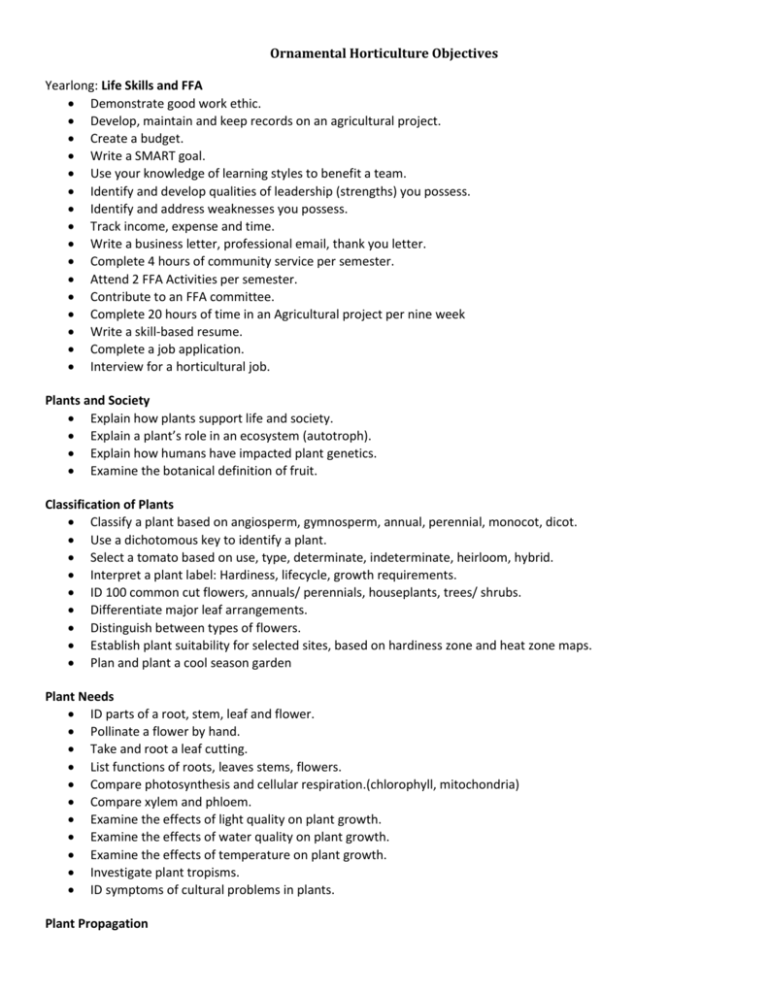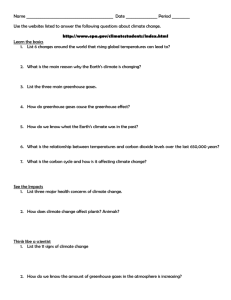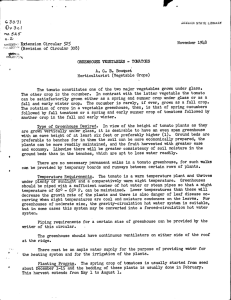Ornamental Horticulture Objectives Yearlong: Life Skills and FFA
advertisement

Ornamental Horticulture Objectives Yearlong: Life Skills and FFA Demonstrate good work ethic. Develop, maintain and keep records on an agricultural project. Create a budget. Write a SMART goal. Use your knowledge of learning styles to benefit a team. Identify and develop qualities of leadership (strengths) you possess. Identify and address weaknesses you possess. Track income, expense and time. Write a business letter, professional email, thank you letter. Complete 4 hours of community service per semester. Attend 2 FFA Activities per semester. Contribute to an FFA committee. Complete 20 hours of time in an Agricultural project per nine week Write a skill-based resume. Complete a job application. Interview for a horticultural job. Plants and Society Explain how plants support life and society. Explain a plant’s role in an ecosystem (autotroph). Explain how humans have impacted plant genetics. Examine the botanical definition of fruit. Classification of Plants Classify a plant based on angiosperm, gymnosperm, annual, perennial, monocot, dicot. Use a dichotomous key to identify a plant. Select a tomato based on use, type, determinate, indeterminate, heirloom, hybrid. Interpret a plant label: Hardiness, lifecycle, growth requirements. ID 100 common cut flowers, annuals/ perennials, houseplants, trees/ shrubs. Differentiate major leaf arrangements. Distinguish between types of flowers. Establish plant suitability for selected sites, based on hardiness zone and heat zone maps. Plan and plant a cool season garden Plant Needs ID parts of a root, stem, leaf and flower. Pollinate a flower by hand. Take and root a leaf cutting. List functions of roots, leaves stems, flowers. Compare photosynthesis and cellular respiration.(chlorophyll, mitochondria) Compare xylem and phloem. Examine the effects of light quality on plant growth. Examine the effects of water quality on plant growth. Examine the effects of temperature on plant growth. Investigate plant tropisms. ID symptoms of cultural problems in plants. Plant Propagation Graft a tomato. Plant a bulb. Propagate a potato from seedstock. Take and root a stem cutting. Clone a plant from stem and leaf cuttings. Germinate a seed Greenhouse Operations and Sales Manipulate a greenhouse to optimize plant growth: germination, photosynthesis. Select, propagate, raise and market a greenhouse crop. Calculate budget and ask for a loan. Maintain appropriate records on a greenhouse crop. Sell a greenhouse crop. Create a bench card and print media advertisement. Complete 2 days of customer service at the RLHS plant sale. Calculate profit. Transplant a plant to nursery standards. Deadhead plants to encourage reflowering. Perform hard and soft pinches to enhance plant growth. Plan a growing schedule for a nursery crop. Prepare plants for sale. Harden off greenhouse plants. ID symptoms of over and under watering. Demonstrate proper watering techniques. Soils and Growing Media List the components of soil. Texture a soil and make appropriate suggestions for soil improvement. Select/ mix a growing media for greenhouse propagation. ID different greenhouse growing medias. Test pH, nitrates, phosphates and potassium levels of a soil sample. Interpret soil test results and make recommendations. Explain how plant needs are met in a soilless system. Explain the importance of microorganisms in the soil. Fertilizers Identify plant macronutrients. Explain the importance of N,P,K. Interpret a fertilizer label. Select a fertilizer based on need. ID and compare methods of application. Correlate plant symptoms to the appropriate nutritional deficiencies for N, P, K, I, Ca. Explain factors affecting nutrient availability. Explain slow release, organic, liquid, granular, and other common buying options. Pest Control ID aphid, powdery mildew, mealybug, codling moth. Explain Integrated Pest Management strategies. Compare types of pesticide applications Interpret pesticide labels. Utilize safety procedures when applying pesticides. ID and properly use personal protective equipment. Read, understand and follow label directions and MSDS. Complete Worker Protection Handler Verification Training









